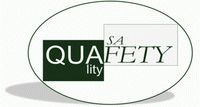 Fresh-cut fruit and vegetables have become an established product in worldwide markets whose acceptability has increased in last years. However, the fresh-cut vegetables are a potential vehicle of transmission of foodborne pathogens, such as Listeria monocytogenes and Escherichia coli O157:H7.
Fresh-cut fruit and vegetables have become an established product in worldwide markets whose acceptability has increased in last years. However, the fresh-cut vegetables are a potential vehicle of transmission of foodborne pathogens, such as Listeria monocytogenes and Escherichia coli O157:H7.Quafety is a European Project on quality and safety of fresh-cut produce.
Italian scientists at University of Foggia, partner in Quafety project, have integrated conventional MPN (Most Probable Number) technique with qPCR (quantitative Polymerase Chain Reaction) to develop a fast, reliable and sensitive method for the detection and quantification of L. monocytogenes and E. coli O157:H7 in fresh-cut vegetables.
Since fresh-cut vegetables are characterized by a short shelf-life, the developed method MPN-qPCR can potentially reduce the time for microbial analysis allowing a better management of quality and safety control.
By comparing the innovative method MPN-qPCR with conventional culture-dependent methods, the former can detect and indirectly quantify the pathogens, which were artificially inoculated at a concentration of as low as 1 CFU/g, after 24 hours of incubation in the corresponding selective media, with a gain of about 4 days compared to the standard culture methods.
Moreover, the scientists assayed a qPCR approach not associated with MPN enumeration by using as target DNA extracted after 0, 2, 4, and 6 hours of enrichment in the corresponding selective media. They observed that after 2 h it was possible to detect L. monocytogenes and E.coli O157:H7 with a limit of 10 CFU/g.
The scientists conclude that this approach could be useful for pathogens control in fresh-cut industry, because this method can provide an estimation of the efficacy of sanitizers treatments and represent an alarm bell to reduce the cross-contamination risks.
Source: Russo P., Botticella G., Capozzi V., Massa S., Spano G., Beneduce L., ‘A fast, reliable, and sensitive method for detection and quantification of Listeria monocytogenes and Escherichia coli O157:H7 in ready-to-eat fresh-cut products by MPN-qPCR’, 2014, BioMed Research International. Further info: http://www.hindawi.com/journals/bmri/2014/608296/abs/
